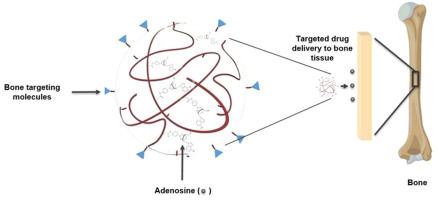With triple appointments in the Departments of Biomedical Engineering, Mechanical Engineering & Materials Science and Orthopaedic Surgery, Shyni Varghese pursues research at the nexus of engineering, physical sciences and medicine. In particular, she conducts basic science research and translates discoveries into new therapies.
She became Duke University’s first MEDx Investigator when she arrived in 2017 to further work based upon her discovery that adenosine, a biomolecule produced naturally by the human body, plays a large role in spurring bone growth. Varghese has since led her group to engineer a bandage for surgeons to implant at the site of a bone fracture that capitalizes on the body’s production of adenosine, holding it at the injury site to accelerate the natural healing process. She has a patent pending for an injectable system for the same treatment, which would enable primary care physicians and other healthcare providers to administer the therapy to patients with compromised bone healing and traumatic injuries.

Further building upon this knowledge, Varghese is also working on a non-hormonal small-molecule drug that activates the same biochemical receptor to treat bone loss associated with osteoporosis. Unlike current treatments, which only slow down bone loss, the drug tested by Varghese’s group has so far shown in animal studies the ability to reverse it and spur the body to rebuild bone. Her group has also developed a targeted nanocarrier system to deliver the drug directly to the bones, which overcomes some of the challenge of adenosine’s rapid breakdown in the bloodstream and other off-target effects.
Varghese also has research in the pipeline on how to use this therapy to reduce pain following orthopedic surgery and injuries. The opioid addiction crisis has driven many researchers to look for alternatives, and Varghese has found that this therapy activates a pathway that raises the threshold of pain tolerance.
“I like to dream and find a solution to things. I need to know ‘Why?’ and ‘How?’ I also have a very strong interest in mentoring students.’’
Shyni Varghese
Other work of her lab includes self-healing hydrogels, which could enable implants and biomaterials to repair themselves. One specific application the group is pursuing is self-repairing lubricants to treat joint injuries.
